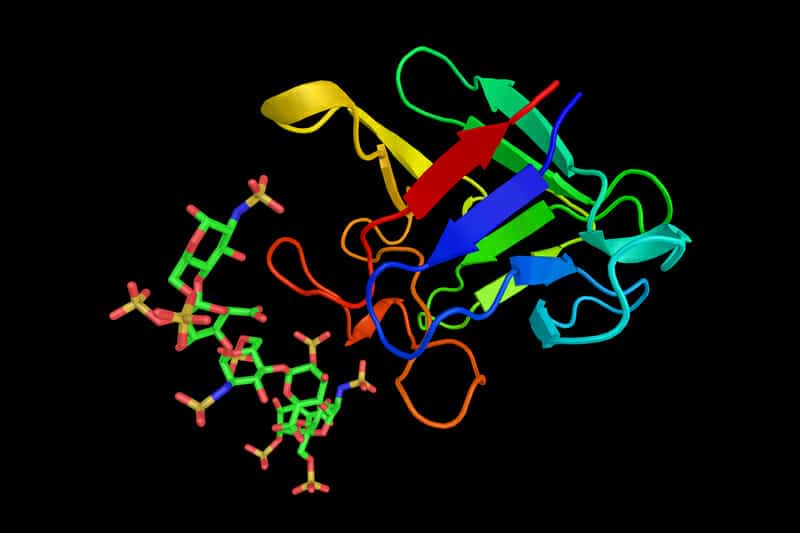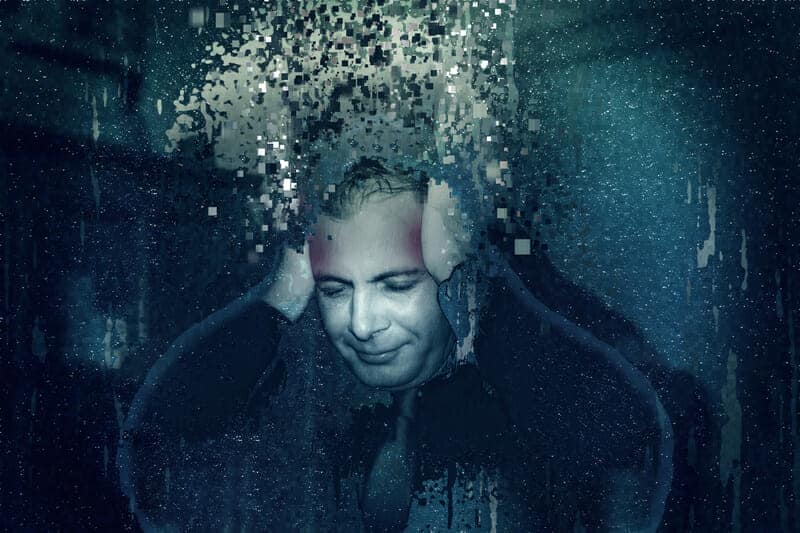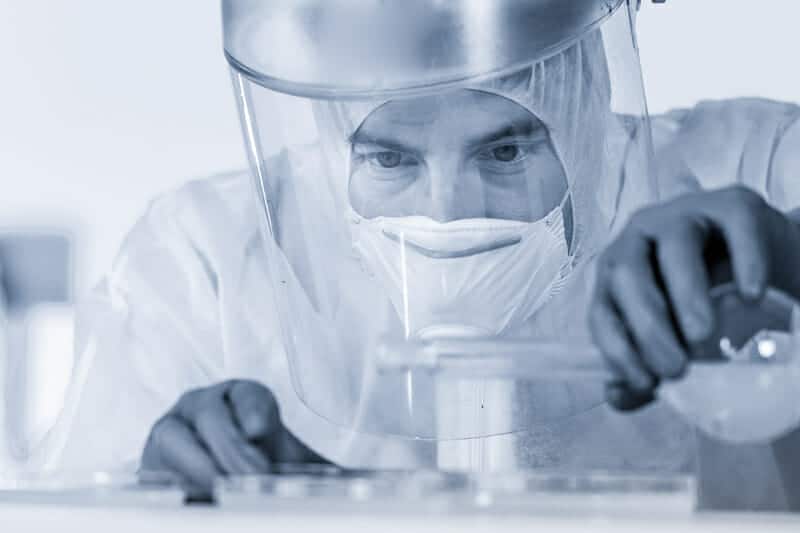In an age of increasingly abundant nootropics, we stop asking “where are they?” and start asking “which one is best?”
But many of them don’t go further than giving you a slight boost in cognition that can easily be matched by a free cup of coffee.
Today’s peptide, FGL, is a recreational nootropic peptide that just happens to do multiple things.
It sharpens your cognition, improves your memory, and happens to show great potential for neurodegenerative diseases such as Alzheimer’s, depression and traumatic brain injury.
So is FGL the most effective brain health peptide your money can buy?
Keep reading and you’ll have your answer.
Table of Contents
ToggleWhat Is FGL?

The FGL peptide (a.k.a. FG loop peptide, or Fibroblast Growth Loop peptide) is 15 amino acids long and is synthetically derived from the neural cell adhesion molecule (NCAM).
That sounds like a lot to take in, so let me give you a brief overview of NCAM:
“Neural cell adhesion molecule (NCAM) is a kind of cell surface glycoprotein that typically possesses the character of immunoglobulin superfamily. NCAM is expressed on the surface of most neural cells.
It is pivotal in neural development, differentiation, and survival, and plays an important role in synaptic plasticity related to learning and memory formation.
NCAM activates various intracellular signal transduction pathways subsequent to interactions with itself or the fibroblast growth factor receptor (FGFR)”
…FGL (EVYVVAENQQGKSK), is derived from the second F3 module of NCAM that represents a part of the binding site of NCAM to the FGFR1. FGL binds to the FGFR1 inducing autophosphorylation of the receptor and subsequent activation of various intracellular signaling cascades.”
Through the activation of the NCAM-FGFR signaling pathway, and behaving as a fibroblast growth factor receptor agonist, FGL is believed to have memory and cognition-enhancing effects.
This is why many peptide physicians refer to FGL as a neurotrophic peptide (i.e. supports growth and development of neurons).
Dr. William Seeds expands on this further in his book Peptide Protocols, Volume 1:
“Created directly as a fibroblast growth factor receptor agonist, FGL activates FGFR1 signaling pathways, increasing neurite outgrowth and survival, which in turn leads to memory enhancement.
FGL has also been found to improve healing of neuronal tissues by decreasing oxidative stress-induced cell death, inhibiting neuronal degeneration and death.”
FGL was first discovered in 2003 by Elisabeth Bock and her colleagues at the University of Copenhagen in Denmark when they wanted to find the specific structural motif of NCAM that directly interacts with FGFR to promote axonal outgrowth.
Once they did, they then recreated the 15-amino-acid sequence responsible for this interaction.
Denmark-based biotechnology company Enkam Pharmaceuticals took an interest in FGL in 2012 and collaborated with the University of Copenhagen to get the peptide tested in clinical trials for Alzheimer’s disease.
In fact, they won a 6 million Euro grant from the European Union to fund said trials.
Unfortunately, despite being part of a larger project known as NeuroFGL (launched to find novel therapies for treating neurodegenerative disorders), no activity has been observed since then.
Even official registries — here and here — reveal FGL is a dead-end for Enkam Pharmaceuticals and we don’t know why.
Since Big Pharma won’t pick up this peptide, why don’t we pick up where they left off?
How Does FGL Work In The Human Body?

Two prominent peptide physicians have already done the leg work of explaining the inner workings of FGL, so I’ll defer to them for this section.
The first doctor is Dr. Elizabeth Yurth of the Boulder Longevity Institute, who went on the Superhuman Radio podcast to explain FTL’s effect on glial cells:
“This FGL is expressed on glial cells and you can directly create this fibroblast growth factor. So again, it’s improving fibroblast growth factor, and that’s and that’s a problem has growth factors improving neuronal sprouting [they make nerves grow]”
It appears that it’s working very specifically on these brain neurons, right? So it actually has an effect on the glial cells. And so it may be one of the few things that we can do that really is a very very direct effect on the cells that we really want to treat… it has a marked benefit for hippocampal inflammation, where your memories are stored.
And so when you look at any strokes that affected a lot of micro ischemic events. And so people have chronic hypertension and develop dementia, a lot of those are micro ischemic strokes… eventually they lose any ability to remember anything.
And so it may have a really nice effect on hippocampal repair and also reducing inflammation in the hippocampus, which may be key to some of the Alzheimer’s.”
(FYI – Glial cells are “non-neuronal cells located within the central nervous system and the peripheral nervous system that provides physical and metabolic support to neurons”)
The second doctor is Dr. William Seeds, who went on Ben Greenfield’s podcast to explain how FGL may be affecting the glial cells in a way where normally-functioning memory can be improved:
“[FGL] is an incredible neurotropic factor that improves the glial cells…what it does so well is, you have these microglial cells that are in the brain that are like the cleanup mechanism of the brain and what you want is, you want those microglial cells not over activated. And so this FGL can put the microglial cell into what we call a quiescent state where it’s not in senescence.”
That’s the neuroprotective side… but what about the neuro-enhancing side?
FGL’s main claim to fame appears to be the promotion of synaptic transmission through a particular biochemical cascade:
“They saw that AMPA receptors, proteins that detect chemical messages in the synapse, were more readily delivered to the surface of a cell. This increases the number that can detect the chemical message and so makes a neuron more sensitive and easier to activate in future. This also happens during a process called long-term potentiation (LTP), a mechanism that is well established as underlying learning and memory in the hippocampus.
This effect on AMPA receptors provided a possible molecular mechanism underlying the memory enhancements seen in rats treated with FGL… in both the hippocampal tissue and live rats, the team disrupted one of the signalling pathways activated by FGL by blocking the activity of an essential enzyme called protein kinase C (PKC).
Blocking PKC prevented the enhancement of AMPA receptor delivery to synapses, and also blocked the memory enhancement of FGL in rats. These two effects together demonstrate that the increase in AMPA receptors is the molecular mechanism underlying the improvement in memory.”
So through increased AMPA receptor availability and PKC pathway activation, we have a peptide that can both repair and optimize cognitive function.
Other notable mechanisms include:
- Increase of neurotransmitter release
- Blood-brain-barrier permeability
- Facilitating remyelinization, which is a repair mechanism protecting against axonal injury
- Mimicking NCAM’s interaction with FGFR1 (fibroblast growth factor receptor 1)
- Being essential for both early synaptogenesis and synaptic maturation
- “stimulates activity-dependent delivery of glutamate receptors to synapses, leading to a long-term enhancement of synaptic transmission in hippocampal neurons.”
If you geek out for complex biochemistry, the video below goes much deeper into the intricate mechanisms of FGL:
https://www.youtube.com/watch?v=87DbldnPPt4
FGL Peptide Benefits

Do the health benefits of FGL translate into the real world, based on how we know it works in the human body?
Can we reliably say we have a single therapeutic peptide that enhances cognitive performance, elevates mood, treat neurodegenerative diseases, and repair damage induced by injury to the brain?
Let’s see what the science has to say…
Enhanced Cognitive Function
Unlike Modafinil, FGL has yet to be involved in human studies that measure changes in cognition.
But we have several cell and animal studies showcasing how it hypothetically does so.
Neuron survival and neurite outgrowth is one of such mechanisms, both of which are key to processing new information and retaining old information.
We also have synaptic connections in the brain increasing in plasticity as a result of FGL administration, along with the formation of new synapses, which makes it a “pharmacological cognitive enhancer”.
Moreover, one rat study suggests FGL may have different effects depending on how young or old you are:
“… the FGL peptide, when administered intranasally to newborn rats, accelerated early postnatal development of coordination skills. In adult animals s.c. administration of FGL resulted in a prolonged retention of social memory.
We found that FGL rapidly penetrated into the blood and cerebrospinal fluid after both intranasal and s.c. administration and remained detectable in the fluids for up to 5 hours.”
One review of cognitive-enhancing peptides perfectly summarizes why FGL continues to gain interest as the next greatest thing for mental health:
“FGL have several advantages that make it a strong candidate as a cognitive enhancer in humans. First, FGL crosses the blood-brain barrier and is stable enough to exert its activity in the brain. Second, FGL can be administrated in a variety of ways, directly into the brain ventricles (intracerebroventricularly – icv), subcutaneously or intranasal.
Third, its effect is not limited to a specific learning paradigm. Four, it has a long lasting effect, much longer that the period FGL can be found in the brain (3-4 hours). This implies that FGL initiates a cascades of events that, once initiated, do not require the ongoing activity of FGL per see”
(NOTE: The FGL people are now focused on is the version where two FGL molecules are linked “through their N-terminal ends by iminodiacetic acid”… you’ll see why this is important later)
One day, we’ll see more peptide physicians look deeper into the experimental use of FGL(L) for reversing cognitive decline and neurodegeneration.
Shows Great Promise For the Treatment of Alzheimer’s Disease
As an example, Enkam Pharmaceuticals already saw the potential for FGL in the treatment of Alzheimer’s back in 2004:
“The optimal Alzhimer’s disease drug has to fulfill three criteria:
First, remove the neurotoxic beta-amyloid proteins that deposit themselves as plaques in your brain
Second, re-establish the function of neuronal cells and the communication between them
Third, and most importantly, actually improve one’s learning abilities and memory… FGL does all three in rat models”
Many studies published since then have validated this hypothesis, such as this paper on rats:
“A synthetic peptide termed FGL derived from the neural cell adhesion molecule (NCAM) was able to prevent or, if already manifest, strongly reduce all investigated signs of Abeta25-35-induced neuropathology and cognitive impairment. The FGL peptide was recently demonstrated to be able to cross the blood-brain-barrier.
Accordingly, we found that the beneficial effects of FGL were achieved not only by intracisternal, but also by intranasal and s.c. administration of the peptide. Furthermore, FGL-treatment was shown to inhibit the activity of GSK3beta, a kinase implicated in signaling regulating cell survival, tau phosphorylation and the processing of the amyloid precursor protein (APP).
Thus, the peptide induced a statistically significant increase in the fraction of GSK3beta phosphorylated on the Ser9-position, a posttranslational modification known to inhibit the activity of the kinase. “
And this result has been consistently repeated:
“The cognitive deficits were not due to hippocampal atrophy as volume estimations of the entire hippocampus and its regions showed no significant loss, but amyloid-beta caused a 40% loss of pyramidal cells in the dorsal CA1 which was alleviated partially by FGL.
However, FGL treatment without amyloid-beta was also found to cause a 40% decrease in CA1 pyramidal cells. The action of FGL may be due to inactivation of GSK3β, as an increased proportion of CA1 pyramidal neurons contained inactive GSK3β after FGL treatment.
These data suggest that FGL, although potentially disruptive in non-pathological conditions, can be neuroprotective in disease-like conditions.”
Seeing as GSK3β is heavily linked to Alzheimer’s Disease pathologies and neuronal network degeneration, this is a rather important finding alongside FGL’s ability to enhance synaptic transmission.
Sadly, the last we heard about FGL and Alzheimer’s was back in 2012 when Enkam Pharmaceuticals got its €6 million grant from the European government to “lead three Phase 1 safety studies, one Phase 2a study in AD patients, and also a pilot study in stroke patients.”
If you want more information, Joe DiStefano recently did a peptides podcast where he talks about the connection between FGL and Alzheimer’s/Parkinson’s (tune in to the 47-minute mark).
Anti-Neuroinflammatory Properties
Although there are only two studies directly investigating this benefit, I’ve long suspected that any effective cognition-enhancing peptide would have to tackle inflammation in the brain.
One study in rats found FGL was able to slow down the increase of the pro-inflammatory compound interleukin-1-beta:
“Administration of FGL to aged rats attenuated the increased expression of markers of activated microglia, the increase in pro-inflammatory interleukin-1beta (IL-1beta) and the impairment in long-term potentiation (LTP).
We report that the age-related increase in microglial activation was accompanied by decreased expression of neuronal CD200, and suggest that the proclivity of FGL to suppress microglial activation is due to its stimulatory effect on neuronal CD200.
We demonstrate that FGL enhanced interleukin-4 (IL-4) release from glial cells and IL-4 in turn enhanced neuronal CD200 in vitro. We provide evidence that the increase in CD200 is reliant on IL-4-induced extracellular signal-regulated kinase (ERK) signal transduction.”
The second study examined FGL’s ability to reverse the decline in IGF-1 levels within the hippocampus in vitro, which is age-related:
“Administration of FGL reversed the age-related decline in IGF-1 in hippocampus, while abrogating the age-related increase in IFNgamma.
FGL robustly promotes IGF-1 release from primary neurons and IGF-1 is pivotal in FGL induction of neuronal Akt phosphorylation and subsequent CD200 ligand expression in vitro.
In addition, FGL abrogates both age- and IFNgamma-induced increases in markers of glial cell activation, including major histocompatibility complex class II (MHCII) and CD40. Finally, the proclivity of FGL to attenuate IFNgamma-induced glial cell activation in vitro is IGF-1-dependent.”
We’ll have to wait and see if there are additional anti-inflammation mechanisms exerted by the FGL peptide.
May Protect Against Induced Neurotoxicity
I was curious to see if FGL could protect against brain toxicity induced by outside agents.
What got my attention was one review on heavy metal toxicity implying FGL could be used for reversing said toxicity:
“Because of their protective effects against high concentrations of metal ions, metallothioneins are being investigated as potential drug targets. Brain injury induces the expression of metallothionein isoforms MT-1 and MT-2, which, in turn, induce the expression of other neurotrophins, neuroplastins, and growth factors essential to neuronal survival, plasticity, and brain tissue repair.
Milena Penkowa of the University of Copenhagen reported that a synthetic peptide resembling a binding site (designated FGL) on the neural-cell adhesion molecule (NCAM) has neuroprotective effects in a rat model of brain injury.
Studies using MT-1 and MT-2 knockout mice and transgenic mice overexpressing MT-1 revealed that the therapeutic action of the NCAM peptide is dependent on the expression of these two metallothionein”
To my good fortune, a few small research papers show FGL may be able to do more than guard our brain from heavy metals:
- FGL was able to lower the increase in pro-inflammatory cytokines induced by lipopolysaccharide.
- FGL restored working memory deficits in rats induced by phencyclidine, which can cause cognitive impairment if newborns are exposed to it
- When rat hippocampal neurons were harmed by oxygen-glucose deprivation to stimulate ischemic brain injury, FGL protected hippocampal neurons when applied before or after the harm was induced
Something to keep in mind for those of you who are constantly exposed to environmental toxins!
Could Exert Antidepressant Effects
Believe it or not, Enkam Pharmaceuticals has an old patent on the use of FGL and other NCAM peptide mimetics for treating psychiatric disorders.
As it turns out, there is a strong link between NCAM deficiency and depression that explains the motivation for filing such a patent:
“The transgenic animal model knocking out the gene encoding the NCAM proteins is a useful tool to verify its role as a potential cause of depression. Mice lacking all three major isoforms of NCAM (NCAM–/–) exhibit citalopram- and amitriptyline-sensitive anhedonia measured by the sucrose preference test (SPT).
In the tail suspension test (TST), an assessment designed test invented to screen for the ADDs [anti-depressant drugs] activity, NCAM–/– animals exhibit an increased time of immobility in comparison to their respective controls.
The above effect has been blocked/attenuated by the classic ADDs amitriptyline and citalopram. These findings indicate that a lack of NCAM proteins is sufficient to evoke “depressive-like” behavior, but is not sufficient to influence the therapeutic effect of ADDs”
So what happens when we put this hypothesis to the test?
A rat experiment published in 2008 confirmed that the depressive-type behavior associated NCAM deficiency may be reversed by treatment with FGL:
“FGL administered acutely or repeatedly reduced depression-like behaviour in NCAM(-/-) mice without having an effect on their wild-type littermates. Repeated administration of FGL enhanced survival of the newly born neurons in NCAM(-/-) mice and increased the levels of pCREB in both NCAM(+/+) and NCAM(-/-) mice.”
“In conclusion, our data demonstrate that NCAM deficiency in mice results in a depression-like phenotype which can be reversed by the acute or repeated administration of FGL. The results also suggest a role of the deficit in NCAM signalling through the FGF [fibroblast growth factor] receptor in depression.”
Although this anti-depressant effect was reproducible in a separate study, a third experiment suggests “acute treatment with FGLL was anxiogenic [i.e. anxiety-promoting] and chronic treatment with FGLL was antidepressant” (Source).
Hopefully, the patent gets put to good use soon so we can figure out what works for treating the most common mental health problem in America.
Helps Improve Memory and Overall Learning
When I was looking for testimonials from other biohackers, this was the only meaningful one I could find:
“Studies on FGL suggest that FGL improves the brain’s ability to modify brain cell connections; and that neurons treated with FGL show that they had higher levels of the receptor AMPA – critical for modifying synapses.
So far (~10 days) I am seeing some pretty amazing results. I’m taking 250mcg x 2 daily. It may sound outlandish, but I do feel like my brain is becoming more ‘plastic’: learning seems easier, and I am experiencing a definite lift of mood. It does have to be injected under body fat (like Cerebrolysin), however.”
Sadly, the one study I found supporting this claim was published all the way back in 2012 and conducted in rats:
“We have found that FGL triggers a long-lasting enhancement of synaptic transmission in hippocampal CA1 neurons. This effect is mediated by a facilitated synaptic delivery of AMPA receptors, which is accompanied by enhanced NMDA receptor-dependent long-term potentiation (LTP). Both LTP and cognitive enhancement are mediated by an initial PKC activation, which is followed by persistent CaMKII activation.”
Fortunately for us, the study was picked up by numerous health outlets and dumbed down to help your average Joe better understand the importance of the findings:
“…synapses can be made more plastic by using a small protein fragment (peptide) derived from a neuronal protein involved in cell-to-cell communication. This peptide (called FGL) initiates a cascade of events inside the neuron that results in the facilitation of synaptic plasticity.
Specifically, the authors found that FGL triggers the insertion of new neurotransmitter receptors into synapses in a region of the brain called the hippocampus, which is known to be involved in multiple forms of learning and memory. Importantly, when this peptide was administered to rats, their ability to learn and retain spatial information was enhanced.”
Given everything we know about FGL to date, this discovery is not surprising… although it’s entirely possible this benefit could be non-existent in human clinical trials.
Fingers crossed for the ability to learn new information and retain more of it!
FGL Is Being Investigated For Other Cognitive Disorders
As it turns out, FGL’s potential has barely been tapped.
Even if the Alzheimer’s route never gets re-explored again, we have many other avenues we can go down:
- FGL improved spinal cord injury recovery when used as a delivery vehicle for local administration of the antitumor drug Taxol
- By treating neuroinflammation and promoting remyelination, FGL may help promote recovery after stroke
- In rats that experienced cognitive decline due to long-term social isolation, FGL rescued the induced cognitive deficit
- It is possible that FGL can serve a neuroprotective role in the treatment of traumatic brain injury
- May treat stress-induced cognitive impairment in people experiencing continuous, chronic stress (Enkam Pharmaceuticals was ecstatic enough about this result to write a big press release)
- FGL appears to “help repair the myelin sheaths around nerves which are damaged in multiple sclerosis” (Source)
The future looks bright for restoring our brainpower back to normal and possibly beyond… all we need are the right Golden Age agents on our side!
FGL Peptide Dosage For Cognitive Health

The optimal FGL dose is 1-2 mg injected subcutaneously into your abdomen once per day on a “5 day on, 2 day off” cycle, according to Dr. William Seeds in his book Peptide Protocols, Volume 1.
He advises younger individuals in their 30s and under to stick with 1 mg and follow his protocol for 6 weeks to see how you feel.
Once other biohacker has claimed to get good results with intramuscular injections in his thigh, but I’m going to trust the doctor on this one.
I also don’t know what the optimal storage conditions are, so follow what other vendors advise (or get lucky and ask a successful user what’s worked best for them)
Speaking of doctors… one peptides physician claims FGL is best when combined with Dihexa for maximized cognitive function:
“I have personally used it paired with DIHEXA and found it very useful for memory. DIHEXA alone doesn’t produce the memory boosting effects for me or many of my patients. The combination works very synergistically though”
“I prescribe a whole host of peptides in my practice with some great results. Personally, DIHEXA by itself hasn’t made a huge impact. When I combined with FGL, my focus, memory retention and overall cognitive function is better. “
Outside of the limited information I provided here, you’re largely on your own for self-experimentation.
FGL Side Effects and Safety

Based on what little information we have available, FGL’s side effects appear to be few and far between.
We haven’t seen any systemic toxicity in animals, and the only human study is a small Phase 1 trial to assess the safety and tolerability of the peptide:
“In an 8-day, open-label, phase I study, 24 healthy male volunteers (mean age 42 [range 24-55] years) received single intranasal doses of FGL(L) (25, 100 and 200mg) in accordance with an ascending dose, sequential-cohort design.
All three intranasal doses of FGL(L) were well tolerated and there were no clinical notable abnormalities in ECG recordings, vital signs or laboratory tests. Three subjects (13%) reported five adverse events.
A transient (<3 minutes) burning sensation in the nose was reported in two subjects at the 200mg dose level while runny eyes (<2 minutes) were experienced in one subject at 25mg. These events had an onset immediately following intranasal administration, and a relationship to FGL(L) was suspected.
One of the latter subjects who had experienced a burning sensation in the nose also experienced dizziness, vomiting and headache with onset >2 days after single-dose administration of FGL(L); no relationship to the study drug was suspected”
Not bad at all!
From two published rat studies showing clear improvements in spatial memory, fear learning also improved and sometimes persisted for as much as 28 days.
Here’s why this type of fear conditioning could be a bad thing:
“The enhancement of fear learning that FGL was found to induce can be both a good and a bad thing. It is a sign of general learning improvements, but specifically it is evidence of learning related to fear.
Increased fearfulness is generally not something good for a healthy person, so if you’re already walking around with more fear than you need in your life, FGL may exacerbate that for you.”
I also managed to find small studies relating FGL use to seizures and increased risk of ovarian cancer progression, but those are isolated incidents and won’t alarm me unless more robust studies prove so.
With this being said, the ONE major side effect of FGL is that it may not work for you.
Your experience with this peptide is 100% individual, depending entirely on your unique biochemistry and the dose you take – i.e. it may work wonders for some, while doing nothing for others.
In the case of my co-author Nick Andrews, there were no observable effects on extremely high daily doses of FGL(L) at 50 mg daily, so everyone will need to find a dose that works best for them.
I have never personally used this peptide but have consistently heard good things about it from peptide-prescribing physicians I trust.
Ultimately, it’s up to you to decide if using FGL(L) is in your best interest.
Where to Buy FGL Peptide

I’m just going to deliver the bad news upfront: There is currently no place I feel comfortable recommending for people who want to buy the FGL peptide online.
First, there is the issue of FGL itself… any vendor who knows their stuff will NOT sell you FGL, but rather a form of the peptide known as “FGL(L)”.
Remember the Phase 1 clinical trial I quoted in the previous section that used this notation?
It wasn’t a typo.. the 15-amino-acid peptide on its own would not be suitable as a human drug:
“FGL is typically synthesized as a dimer (FGL(L)) or dendrimer (FGL(d)). Preclinical studies demonstrate that the dimer and dendrimer have similar potencies and biological effects. FGL(L) has a relatively short half-life of approximately 6 h.
However, the FGL(L) has been used more extensively than FGL(d) in vivo because its small molecular weight makes it more permeable. FGL(L) has been shown to rapidly enter the bloodstream, to penetrate the blood–brain barrier, and to circulate within the cerebrospinal fluid upon systemic administration.”
The dimerized form (i.e. two FGL molecules bonded together) is what you want to be looking for.
Given how difficult it is to synthesize such a peptide with near 100% purity, and considering the doses of FGL you would be using, any peptide chemist will tell you that the manufacturing process can be really expensive.
Put another way: “$100 for 5mg might be doable.”
Even former peptides lab Ceretropic, back when they were the world’s #1 vendor before shutting down, said no to selling FGL because it would cost hundreds of dollars to manufacture a few doses at most.
And adding on to the use of FGL(L) like we saw in the Phase 1 trial, FGL(L) alone might not cut it as an intranasal solution.
(I’m of the firm belief that 99% of peptides are most effective when injected subcutaneously or intramuscularly, but that’s an argument for another article)
One solution appears to be the use of HA-FGL, which is the FGL peptide with a hyaluronate attachment that provides “improved enzymatic stability and delivery efficiency from the nose to the brain” (Source) and a much longer half-life by extension.
Wholistic Research has the only useful write-up I can find on this compound, but you won’t get any information about it elsewhere (although biohackers have reported very mixed results with HA-FGL).
So while I wait for the right vendor to figure out these shenanigans, I implore you to check out the following peptides for fully optimized brain health:
And if you’re brand new here, Limitless Life Nootropics is where to go if you want ultra-pure therapeutic peptides from a reliable supplier.
Use code JAY15 to get 15% off your order!
Additional Reading Resources For FGL

Despite the overwhelming research behind FGL’s efficacy, thanks to what we already know about the human brain, we have a long way to go with human testing.
We had some early promise almost 2 decades ago towards official approval as a medical treatment… but only a truly ambitious peptides expert will pick up the pieces and start over.
So for those individuals willing to go down that path, here are some valuable resources to help you…
The GeneMedics Health Institute has created a 5-minute summary of every study conducted on the FGL peptide (33 in total!).
This 10-minute YouTube video goes over the different structural variations of FGL and their potential effects on cognition.
Jean Francois-Tremblay, renowned peptide biochemist and owner at CanLab Research, gives his personal insights on FGL in a recent podcast he did.
As always…
Raise Your Vibration To Optimize Your Love Creation!
PS – For many more peptides and esoteric insights to help you become the sharpest man or woman alive, join The Fully Optimized Health Private Membership Group.
It’s your greatest opportunity to fully optimize your health, gain total access to myself and network with high-level men and women looking to 10X their life.
You’ll also get access to my best-selling books and webinars for free, state-of-the-art testosterone optimization, cutting-edge research on peptides and supplements, and my “black book” rolodex of the world’s best hormonal health physicians.



